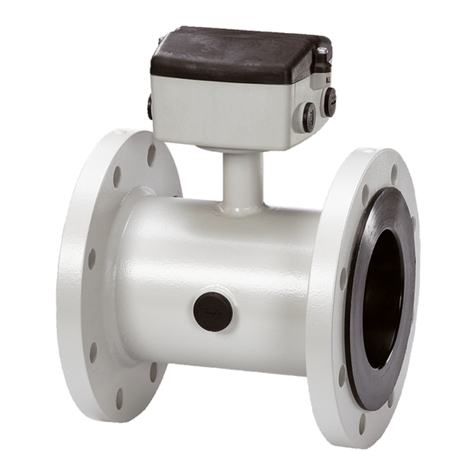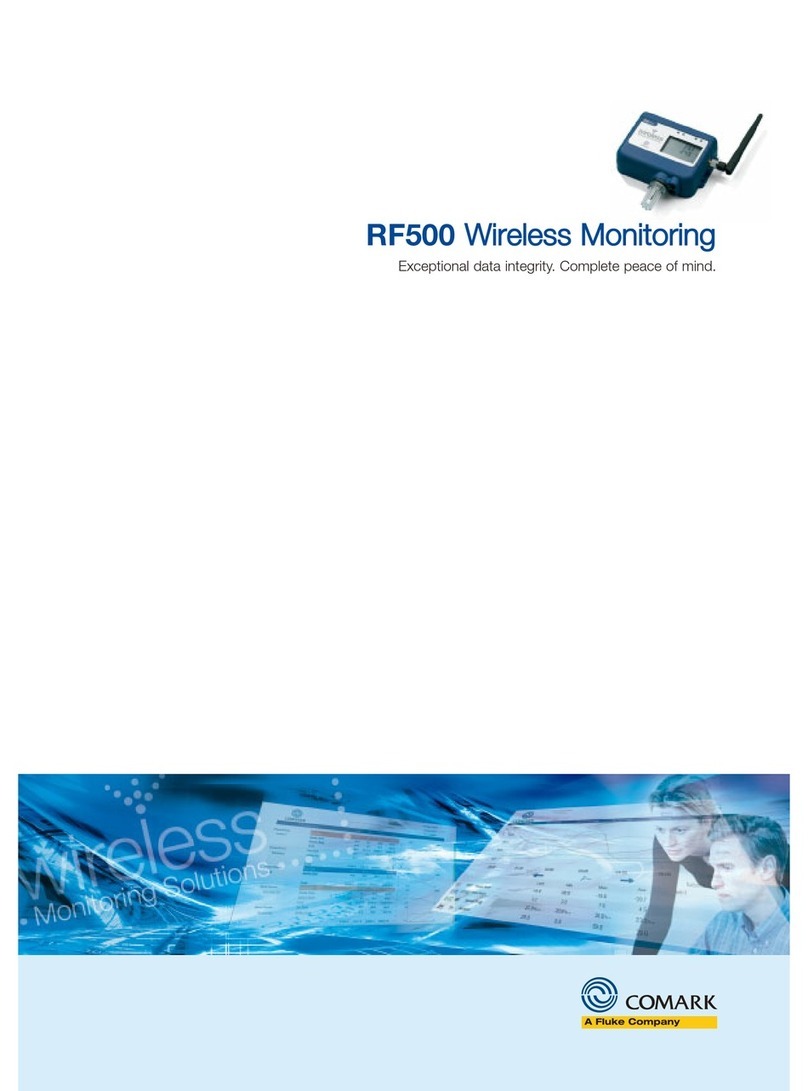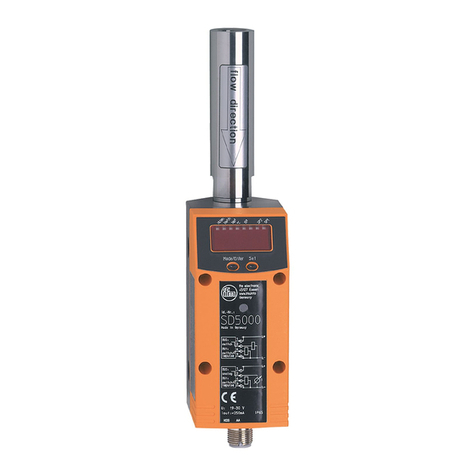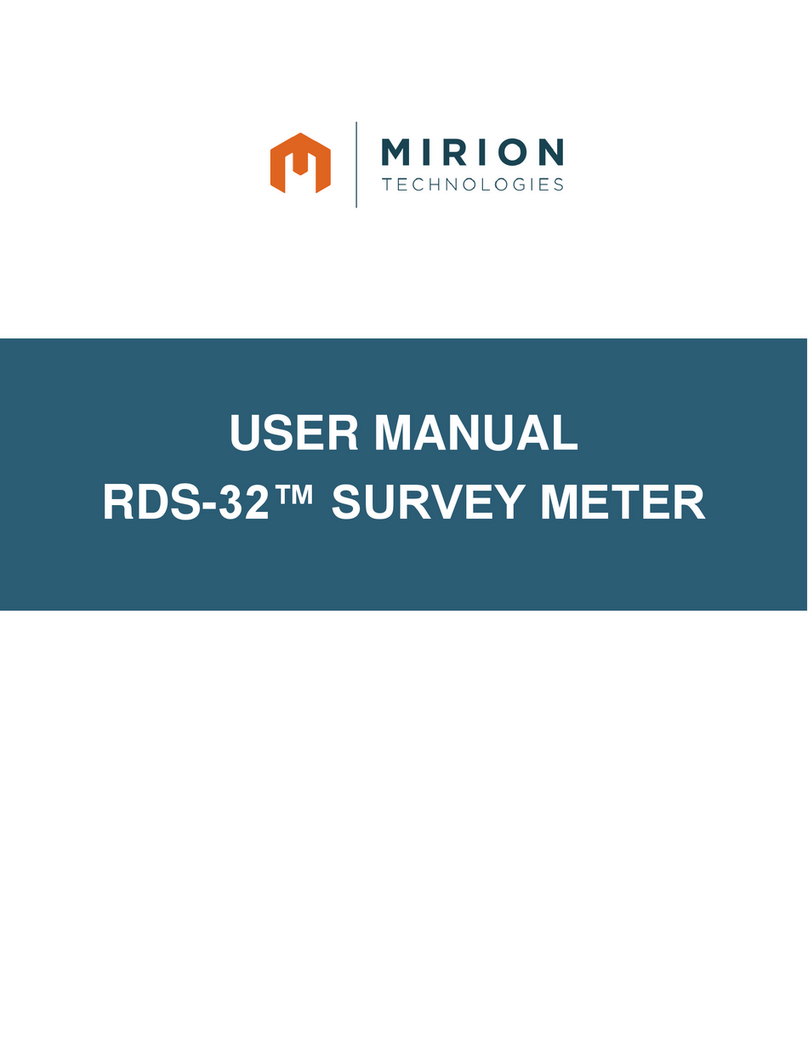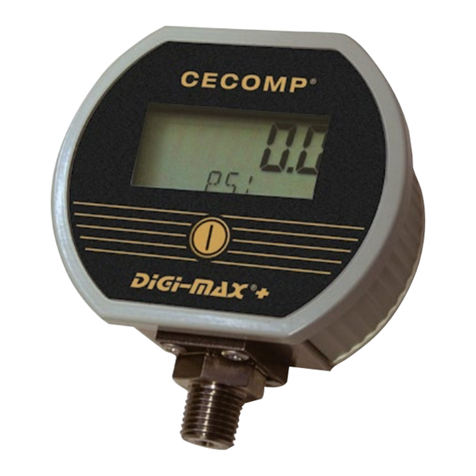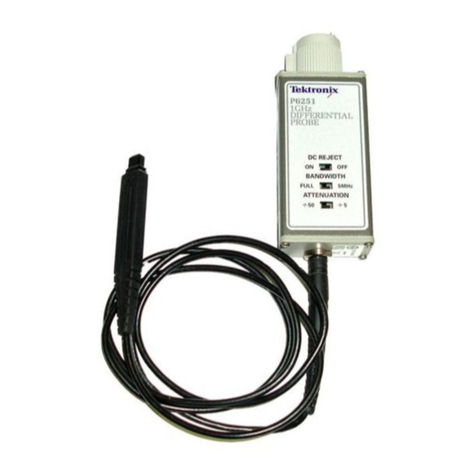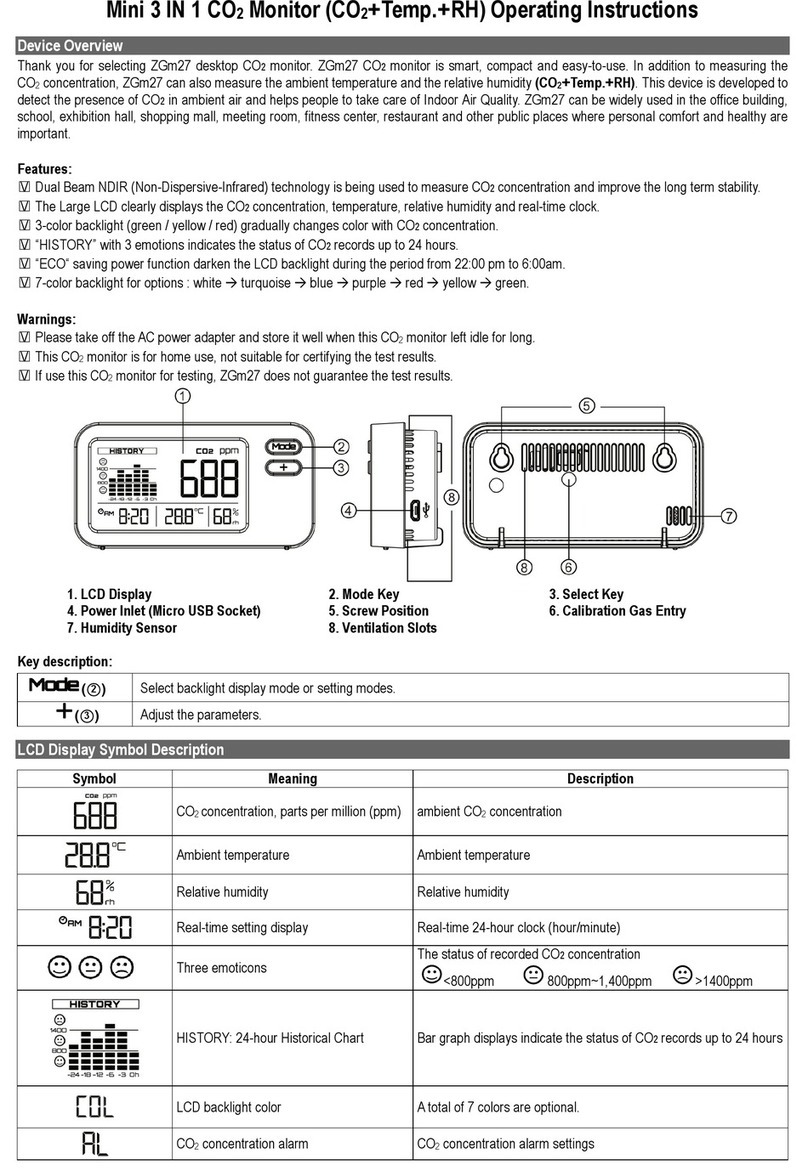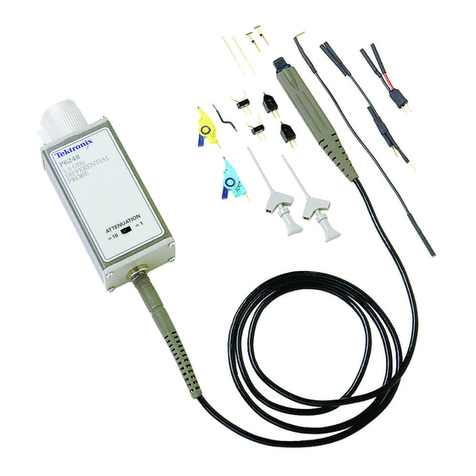SEAGUARD Sentry multizone User manual

S-SM-11-01f / 1
Sentry multizone instructions
Introduction
Sentry mutizone is a microprocessor based multi-zone corrosion monitor. An LCD display and
LED’s provide indication of the vessel’s level of cathodic protection. The multizone capability of the
Sentry mutizone allows up to three independent zones on a vessel to be simultaneously monitored.
For example, the external hull may represent one zone, other zones may include the insides of sea
chests, ballast tanks, water jet tunnels etc. Each zone requires a reference electrode to be installed.
The Sentry multizone kit comprises a multizone monitor, mounting screws, batteries and an earth
lead.
For our other corrosion monitor products visit our web site atwww.seaguard.co.nz
Sentry multizone installation
1
2
3
zone
under
over
protected
test
Box
outline Box mounting
hole locations
E1
2
3
Connect to hull
Zone 1
ref electrode
Zone 2
ref electrode
Zone 3
ref electrode
83.5
52.5
a. The Sentry can be bulkhead mounted in any
convenient location such as in the engine
room or in the vessel’s bridge/pilot house.
The box dimensions are 115 mm x 65 mm x
40 mm deep.
b. Drill two 3.7/3.8mm diameter holes at 83.5
mm by 52.5 mm centers on the hull bulkhead
or other suitable mounting location.
c. Remove the Sentry lid. Mount the box using
the two 8g x 12 mm self tapping screws
provided.
d. Insert the 3 x AA batteries supplied. Refasten
the Sentry lid making sure that the desiccant
pack remains inside.
e. Connect terminal E to the hull with the black
earth lead provided.
f. Connect terminals 1,2 & 3 to the blue
reference electrode wires for zones 1,2 & 3
respectively.
Note: The reference electrode is purchased
separately.
Sentry test
Mount the Sentry and reference electrode as described above.
Once re-assembled press the ‘test’ button and check that all lights illuminate briefly.
During this lamp test check that the appropriate material is displayed on the LCD (‘ALU’ for
Aluminum, ‘FE’ for Steel or ‘Br’ for bronze).

S-SM-11-01e / 2
Sentry operation
Press the ‘test’ button.
All the LED’s will briefly light in the initial lamp test mode.
The yellow LED corresponding to zone 1 will then light and the protection level for zone 1 will be
shown by two LED’s on the protection level display and the millivolt reading will be indicated on the
LCD.
After a few seconds the yellow Zone 2 LED will illuminate and the protection level LEDs and LCD will
show the protection level within this zone.
After a few seconds more the yellow Zone 3 LED will illuminate and the protection level LEDs and
LCD will show the protection level within this zone.
The cycle will then recommence with the Zone 1 display.
Note. If only two zones have been specified at the time of ordering then zone 3 will not be
displayed.
In order to conserve battery life the unit operates for 30 seconds and then powers down.
In case of low battery voltage a ‘Lo Bat’ indication will appear in the top left corner of the LCD.
The Sentry LED’s indicate the current level of cathodic protection.
Providing that the Sentry has been set up for the correct material being protected then the green
LED indication shows that the material is protected from corrosion. Red LED indication warns of
under protection or over protection. Under protection indicates corrosion can take place. Over
protection can also indicate that corrosion or other problems are occurring.
Extreme over or under protection is indicated by a single flashing red LED.
An extreme over protection indication may also be caused by faulty connection to the electrode or
the electrode being out of the water.
For a particular zone, a reference electrode must be connected to the corresponding terminal on
the
Sentry mutizone and it must be in contact with sea water. Only then will the unit correctly indicate the
cathodic protection level.
Sentry calibration and options
The Sentry has been calibrated prior to dispatch from the factory and needs no further adjustment.
Three material settings are available on this model for correctly displaying the protection level of
Aluminum, Steel or Bronze. This is set at the factory.
Sentry fault finding
In order to test the operation of the Sentry press ‘test’ and check that all lights illuminate for about
one second and that the LCD displays the material being monitored. If this does not happen check
that the batteries are not flat and that they are correctly installed.
Disconnect the electrode wire from terminal ‘1’ and check that the top red led flashes and that the
LCD reads between -1200 and -1300mV when zone 1 is being displayed. Repeat this for electrodes
2 and 3.
Link terminals ‘E’ and ‘1’ and check that the LCD reads between -10 and +-10mV when zone 1 is
being displayed. Repeat this for electrodes 2 and 3.
.
Reconnect terminal ‘E’ to the hull and terminals ‘1’, ‘2’ and ‘3’ to their individual electrodes.

S-SM-11-01f / 3
Seaguard Ltd, P.O.Box 2628, Christchurch, New Zealand
Telephone: +64 (0)3 389 9032 Mobile: +64 (0)25 362 767 Fax: +64 (0)3 389 9042
Cathodic protection levels
The Sentry mutizone has LCD and LED (Light Emitting Diode) indication of the cathodic protection
level. Providing the unit has been set up for the correct material and reference electrode type
(factory adjustable only), green LED indication shows that the material is protected from corrosion.
Red LED indication can indicate under protection or over protection. Under protection indicates
corrosion can take place. The rate of corrosion is influenced by a number of variables such as the
type of material, the oxide layer present, the quality of the electrolyte and the potential relative to the
reference electrode. Moderate over protection can be accepted but may be uneconomic for steel,
bronze and brass. Over protection can cause problems with aluminum due to amphoteric attack.
LCD readings can be evaluated from the table below for Seaguard zinc electrodes and typical
materials in use in the marine sector. For Ag AgCl reference electrodes, subtract 1000 from the
numbers below:
Material Freely corroding Protected Over protected
Carbon steel +390 +150
304 Stainless steel (active) +470 +230
Aluminum +260 +50 -100
Bronze +680 +350
Brass +640 +310
Corrosion Theory
The rate of corrosion is influenced by a number of variables such as the type of material, the oxide
layer present, the quality of the electrolyte and the potential relative to the reference electrode.
Moderate over protection can be accepted but may be uneconomic for steel, bronze and brass.
Over protection can cause paint disbondment and hydrogen embrittlement in high strength steel,
and can cause amphoteric attack to aluminum.
Corrosion rates depend upon many factors and, for this reason, the protection should be monitored
regularly under all operating conditions. These should include measuring the protection whilst the
vessel is moored and whilst under way.
If the anodes on the vessel have been set up for seawater usage and the vessel is used in fresh
water, the protection levels may fall and the Sentry will indicate the vessel is under protected. Under
normal circumstances, this should not be a problem as corrosion rates in fresh water are
significantly less than in seawater.
Care should always be taken where dissimilar metals are used next to one another.
Specifications
Dimensions 115 x 65 x 40mm Battery life 2 years (when used once per day)
Mounting bulkhead Ref. electrode Zinc
Power 3 x alkaline AA cells Zones 1,2 or 3 zones
Operating temp. 0 to 500 CResolution +/-5 mV
Range -1300mV to +1300mV Protection IP 65
Table of contents
Popular Measuring Instrument manuals by other brands

ThermoWorks
ThermoWorks Therma K operating instructions
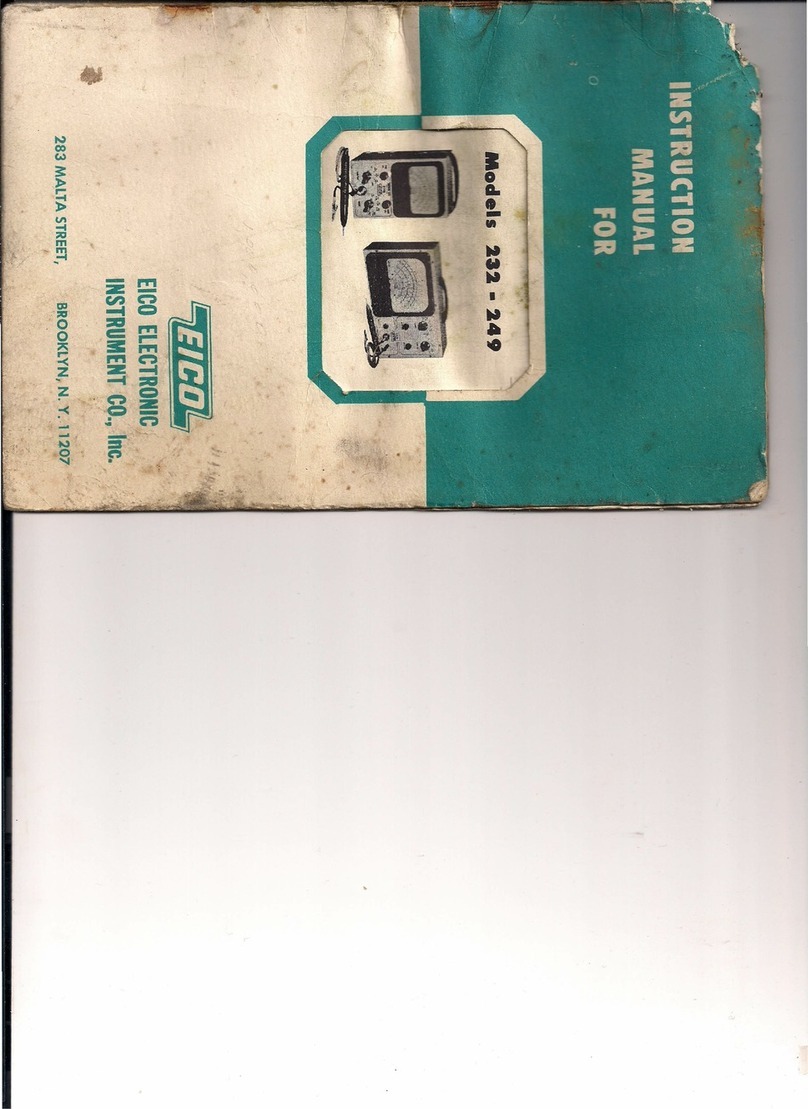
Eico
Eico 232 instruction manual
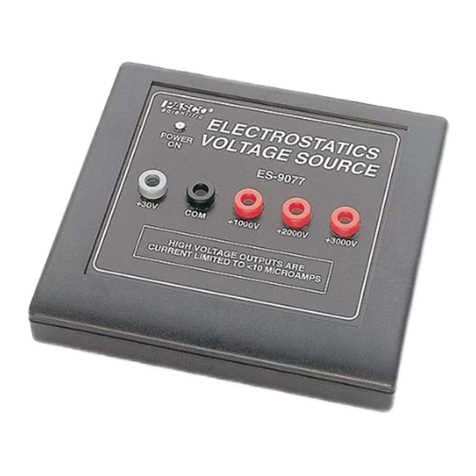
PASCO
PASCO ES-9077 instruction sheet
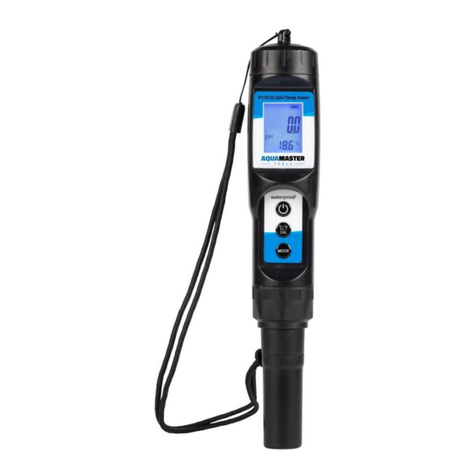
AquaMaster Tools
AquaMaster Tools Combo pen P110 Pro user manual
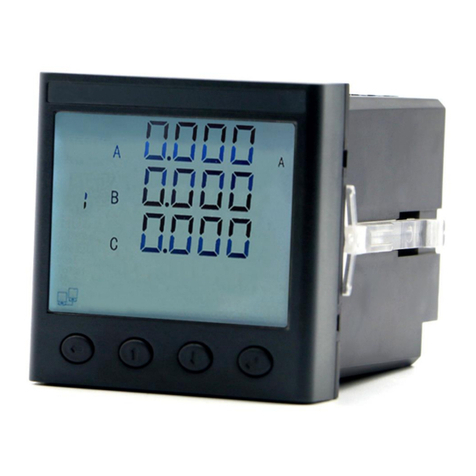
Heyuan Intelligence
Heyuan Intelligence DZ81-MS3UI7C user manual
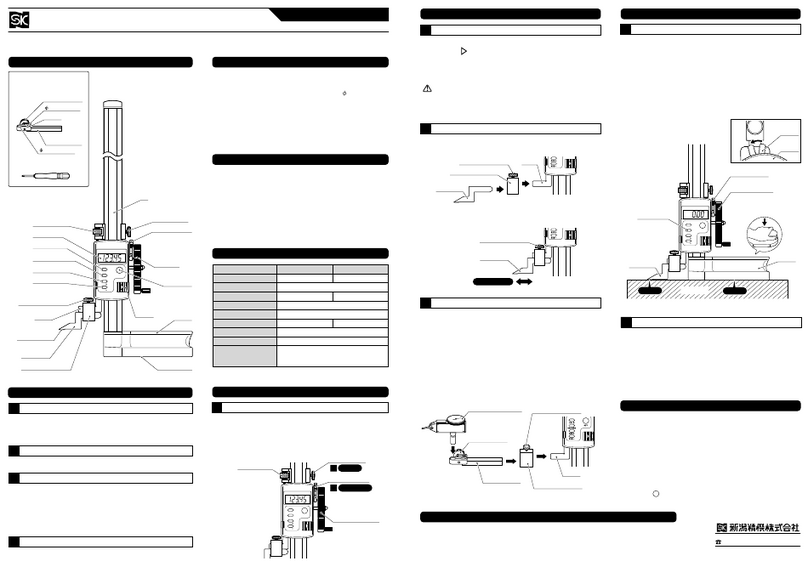
Niigata seiki
Niigata seiki VHS-30D instruction manual
